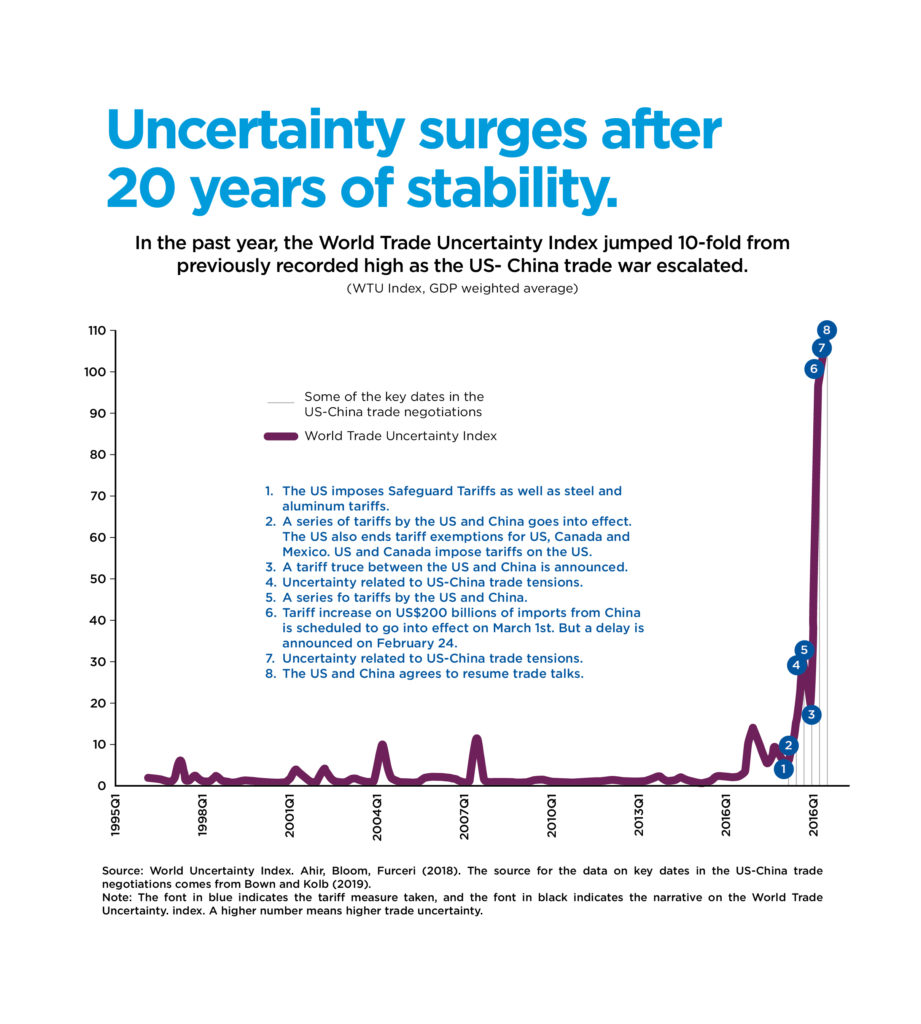Rethinking Middle Management: Why They Are Key To A Thriving Organization

Table of Contents
A recent Gallup study revealed that only 33% of employees feel engaged at work. A significant contributing factor to this disengagement often lies within the effectiveness (or lack thereof) of middle management. This article argues that a fundamental rethinking of the role and responsibilities of middle management is crucial for creating a thriving organization, one where employees are engaged, productive, and innovative. We'll explore how a strategic shift in perspective can transform middle managers from mere overseers into catalysts for growth and organizational success.
The Evolving Role of Middle Management in the Modern Workplace:
The traditional image of middle management—a layer of strict supervisors focused solely on compliance—is outdated and detrimental to organizational success. The modern workplace demands a new approach.
H3: From Overseer to Facilitator:
The shift from a purely supervisory role to one focused on coaching, mentoring, and empowering teams is paramount. This transformation requires middle managers to develop new skills and adopt a more collaborative approach.
- Modern Middle Management Responsibilities:
- Fostering collaboration and teamwork across departments.
- Driving innovation and creative problem-solving within their teams.
- Navigating organizational change and effectively communicating updates to their teams.
- Mentoring and developing team members' skills and career paths.
This shift significantly impacts employee morale and productivity. Empowered employees are more likely to be engaged, leading to increased innovation, higher quality work, and improved retention rates. This translates directly to improved organizational development and performance.
H3: Bridging the Gap Between Leadership and Employees:
Middle management serves as a critical link, ensuring seamless communication and alignment between strategic goals set by senior leadership and the day-to-day operations executed by teams.
-
Effective Communication Strategies:
- Regular team meetings with open dialogue and feedback sessions.
- Transparent communication of company-wide updates and changes.
- Utilizing various communication channels to suit different team members' preferences.
-
Robust Feedback Mechanisms:
- Regular performance reviews with constructive feedback and goal setting.
- Open-door policies that encourage employees to voice concerns and suggestions.
- 360-degree feedback systems to gather input from various stakeholders.
Poor communication and misalignment between leadership and employees lead to decreased productivity, confusion, and ultimately, failure to meet organizational goals. Effective middle management mitigates these risks by proactively addressing communication challenges and fostering a culture of transparency.
Middle Management as a Catalyst for Innovation and Growth:
Middle managers are not simply executors; they are vital drivers of innovation and growth.
H3: Fostering a Culture of Innovation:
Middle managers can cultivate a culture where creativity, experimentation, and calculated risk-taking are encouraged.
- Strategies for Fostering Innovation:
- Organizing regular brainstorming sessions and idea generation workshops.
- Encouraging cross-functional collaboration to foster diverse perspectives.
- Providing the necessary resources and support for experimentation and prototyping.
- Celebrating successes and learning from failures to build resilience.
Companies like Google, known for their innovative culture, actively empower their middle managers to create environments conducive to creative problem-solving and organizational agility.
H3: Driving Employee Development and Retention:
Investing in employee development is crucial for retention, and middle managers play a pivotal role in this process.
- Employee Development Initiatives:
- Mentorship programs pairing experienced employees with rising stars.
- Providing opportunities for professional training and skill development.
- Conducting regular performance reviews focusing on both feedback and career progression.
By actively supporting employee development, middle management demonstrates a commitment to their teams' growth, leading to increased loyalty and significantly reducing employee turnover. This translates into significant cost savings and improved organizational efficiency.
Addressing Common Challenges in Middle Management:
While the role of middle management is crucial, addressing common challenges is essential for optimizing their effectiveness.
H3: Overcoming Micromanagement and Bureaucracy:
Micromanagement and excessive bureaucracy stifle employee initiative and productivity. Empowering middle managers to delegate effectively and streamline processes is key.
-
Effective Delegation Techniques:
- Clearly defining roles and responsibilities.
- Providing the necessary training and resources.
- Setting clear expectations and deadlines.
- Trusting employees to complete tasks independently.
-
Process Optimization Strategies:
- Identifying bottlenecks and inefficiencies.
- Streamlining workflows and procedures.
- Implementing automation where appropriate.
Empowered middle managers can create more autonomous and efficient teams, leading to increased productivity and employee satisfaction.
H3: Developing Essential Skills for Middle Managers:
Developing key skills is critical for success in this evolving role.
- Essential Skills for Middle Managers:
- Leadership skills: motivating, inspiring, and guiding teams.
- Communication skills: clearly conveying information and actively listening.
- Conflict resolution skills: mediating disagreements and facilitating constructive solutions.
- Strategic thinking skills: understanding organizational goals and aligning team efforts.
Investing in management training programs and providing ongoing professional development opportunities will ensure middle managers possess the necessary skills to excel.
Conclusion:
In conclusion, the effectiveness of middle management is inextricably linked to organizational success. By rethinking their role, fostering a culture of empowerment, and investing in their development, organizations can unlock the full potential of their middle management layer. This leads to increased employee engagement, improved innovation, higher retention rates, and ultimately, a thriving organization. To achieve this, prioritize investing in effective middle management training, empowering your middle managers to lead, and consistently refining your middle management strategy. For further resources on leadership development and effective middle management strategies, consider exploring resources from reputable management consulting firms and professional development organizations. Rethinking your middle management strategy isn't just an option—it's a necessity for long-term organizational success.

Featured Posts
-
 Trumps Skepticism Towards Ukraines Nato Membership A Deep Dive
Apr 26, 2025
Trumps Skepticism Towards Ukraines Nato Membership A Deep Dive
Apr 26, 2025 -
 Worlds Tallest Abandoned Skyscraper Construction To Restart After A Decade
Apr 26, 2025
Worlds Tallest Abandoned Skyscraper Construction To Restart After A Decade
Apr 26, 2025 -
 A Cnn Anchors Personal Paradise Exploring The Allure Of Florida
Apr 26, 2025
A Cnn Anchors Personal Paradise Exploring The Allure Of Florida
Apr 26, 2025 -
 Bullions Rise Amidst Global Trade Uncertainty A Price Record
Apr 26, 2025
Bullions Rise Amidst Global Trade Uncertainty A Price Record
Apr 26, 2025 -
 Nfl Drafts First Round A Green Bay Preview
Apr 26, 2025
Nfl Drafts First Round A Green Bay Preview
Apr 26, 2025
